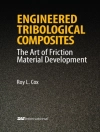Principles of Flight Simulation is a comprehensive guide to
flight simulator design, covering the modelling, algorithms and
software which underpin flight simulation.
The book covers the mathematical modelling and software which
underpin flight simulation. The detailed equations of motion used
to model aircraft dynamics are developed and then applied to the
simulation of flight control systems and navigation systems.
Real-time computer graphics algorithms are developed to implement
aircraft displays and visual systems, covering Open GL and
Open Scene Graph. The book also covers techniques used in motion
platform development, the design of instructor stations and
validation and qualification of simulator systems.
An exceptional feature of Principles of Flight Simulation
is access to a complete suite of software (href=’http://www.wiley.com/go/allerton’>www.wiley.com/go/allerton)
to enable experienced engineers to develop their own flight
simulator – something that should be well within the
capability of many university engineering departments and research
organisations.
* Based on C code modules from an actual flight simulator
developed by the author, along with lecture material from lecture
series given by the author at Cranfield University and the
University of Sheffield
* Brings together mathematical modeling, computer graphics,
real-time software, flight control systems, avionics and simulator
validation into one of the faster growing application areas in
engineering
* Features full colour plates of images and photographs.
Principles of Flight Simulation will appeal to senior and
postgraduate students of system dynamics, flight control systems,
avionics and computer graphics, as well as engineers in related
disciplines covering mechanical, electrical and computer systems
engineering needing to develop simulation facilities.
İçerik tablosu
About the Author.
Preface.
Glossary .
1 Introduction.
1.1 Historical Perspective.
1.2 The Case for Simulation.
1.3 The Changing Role of Simulation.
1.4 The Organization of a Flight Simulator.
1.5 The Concept of Real-time Simulation.
1.6 Pilot Cues.
1.7 Training versus Simulation.
1.8 Examples of Simulation.
References.
2 Principles of Modelling.
2.1 Modelling Concepts.
2.2 Newtonian Mechanics.
2.3 Axes Systems.
2.4 Differential Equations.
2.5 Numerical Integration.
2.6 Real-time Computing.
2.7 Data Acquisition.
2.8 Flight Data.
2.9 Interpolation.
2.10 Distributed Systems.
2.11 A Real-time Protocol.
2.12 Problems in Modelling.
References.
3 Aircraft Dynamics.
3.1 Principles of Flight Modelling.
3.2 The Atmosphere.
3.3 Forces.
3.4 Moments.
3.5 Axes Systems.
3.6 Quaternions.
3.7 Equations of Motion.
3.8 Propulsion.
3.9 The Landing Gear.
3.10 The Equations Collected.
3.11 The Equations Revisited – Long Range Navigation.
References.
4 Simulation of Flight Control Systems.
4.1 The Laplace Transform.
4.2 Simulation of Transfer Functions.
4.3 PID Control Systems.
4.4 Trimming.
4.5 Aircraft Flight Control Systems.
4.6 The Turn Coordinator and the Yaw Damper.
4.7 The Auto-throttle.
4.8 Vertical Speed Management.
4.9 Altitude Hold.
4.10 Heading Hold.
4.11 Localizer Tracking.
4.12 Auto-land Systems.
4.13 Flight Management Systems.
References.
5 Aircraft Displays.
5.1 Principles of Display Systems.
5.2 Line Drawing.
5.3 Character Generation.
5.4 D Graphics Operations.
5.5 Textures.
5.6 Open GL¯®.
5.7 Simulation of Aircraft Instruments.
5.8 Simulation of EFIS Displays.
5.9 Head-up Displays.
References.
6 Simulation of Aircraft Navigation Systems.
6.1 Principles of Navigation.
6.2 Navigation Computations.
6.3 Map Projections.
6.4 Primary Flight Information.
6.5 Automatic Direction Finding (ADF).
6.6 VHF Omnidirectional Range (VOR).
6.7 Distance Measuring Equipment (DME).
6.8 Instrument Landing Systems (ILS).
6.9 The Flight Director.
6.10 Inertial Navigation Systems.
6.11 Global Positioning Systems.
References.
Further Reading.
7 Model Validation.
7.1 Simulator Qualification and Approval.
7.2 Model Validation Methods.
7.3 Latency.
7.4 Performance Analysis.
7.5 Longitudinal Dynamics.
7.6 Lateral Dynamics.
7.7 Model Validation in Perspective.
References.
8 Visual Systems.
8.1 Background.
8.2 The Visual System Pipeline.
8.3 3D Graphics Operations.
8.4 Real-time Image Generation.
8.5 Visual Database Management.
8.6 Projection Systems.
8.7 Problems in Visual Systems.
References.
9 The Instructor Station.
9.1 Education, Training and Instruction.
9.2 Part-task Training and Computer-based Training.
9.3 The Role of the Instructor.
9.4 Designing the User Interface.
9.5 Real-time Interaction.
9.6 Map Displays.
9.7 Flight Data Recording.
9.8 Scripting.
References.
10 Motion Systems.
10.1 Motion or No Motion?
10.2 Physiological Aspects of Motion.
10.3 Actuator Configurations.
10.4 Equations of Motion.
10.5 Implementation of a Motion System.
10.6 Hydraulic Actuation.
10.7 Modelling Hydraulic Actuators.
10.8 Limitations of Motion Systems.
10.9 Future Motion Systems.
References.
Index.
Yazar hakkında
David Allerton is Professor of Computer Systems Engineering in the Department of Automatic Control and Systems Engineering at the University of Sheffield. He is a Fellow of the Royal Aeronautical Society (FRAe S) and the Institution of Electrical Engineers (FIEE). He has been a Lecturer at the University of Southampton and the Professor of Avionics at Cranfield University. He has served on several national committees and is a member and past-Chairman of the Royal Aeronautical Society’s Flight Simulation Group.












